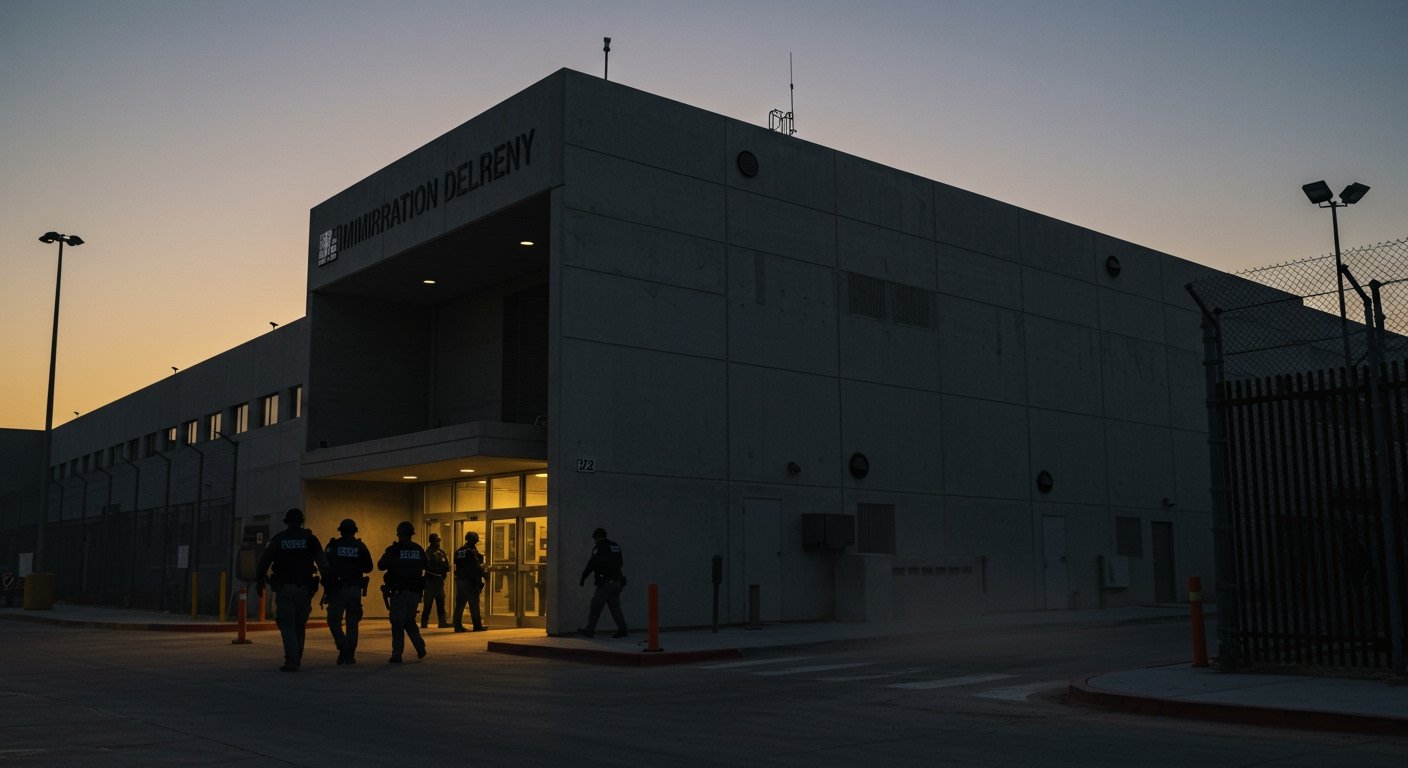The United States border with Mexico, particularly the expansive frontier in Texas, is poised for a dramatic transformation following the recent approval of a sweeping federal budget allocation. The legislation includes a substantial $150 billion directed towards enhancing border security and immigration enforcement capabilities. This significant financial injection, contained within what is referred to as the “Trump megabill” by some, represents an unprecedented investment aimed at substantially increasing the nation’s capacity for the capture and deportation of migrants.
Unprecedented Funding and Agency Empowerment
The core of this legislative package is its profound impact on the funding and operational scope of key federal agencies involved in immigration enforcement. Under the provisions of this bill, Immigration and Customs Enforcement (ICE) is designated to become the highest-funded federal law enforcement agency. The bill allocates funding aimed at facilitating a tripling of ICE’s budget specifically for the hiring of new agents. Beyond personnel expansion, the legislation also earmarks potentially tens of billions of dollars for the creation of new detention facilities across the country, a critical component for housing a significantly larger population of detained migrants.
This level of financial commitment underscores a clear directive from the federal government to prioritize and escalate immigration enforcement efforts. The $150 billion figure is a headline number that signals a long-term strategy to build out the physical and human infrastructure required for a far more aggressive approach to border control and internal enforcement.
Implications for the Texas Border
As the state sharing the longest stretch of border with Mexico, Texas is expected to experience the most immediate and pronounced effects of this massive funding increase. The allocation for new agents means a potential surge in enforcement personnel deployed to the Texas border region, from Customs and Border Protection (CBP) officers at ports of entry to Border Patrol agents operating between them, and crucially, ICE agents conducting enforcement operations both at the border and inland.
The funding for new detention facilities is also highly relevant to Texas, which already hosts numerous immigration detention centers. A significant portion of the tens of billions allocated could be directed towards expanding existing facilities or constructing entirely new ones within the state. This infrastructure is essential for supporting the objective of increasing the capacity for capturing and holding migrants pending deportation proceedings or removal.
The practical outcome on the ground is anticipated to be a more visible and active federal enforcement presence, potentially leading to increased apprehensions at the border and more robust interior enforcement activities targeting individuals deemed to be in the country unlawfully.
Expert Perspectives and Strategic Goals
Analysts observing U.S. immigration policy view this funding as a clear signal of intent. Kathleen Bush-Joseph, an analyst with the Migration Policy Institute, offered a concise assessment of the bill’s potential impact, stating definitively that it will “supercharge immigration enforcement.” This phrase captures the magnitude of the operational shift enabled by the funding – moving beyond incremental increases to a fundamental acceleration of enforcement capabilities.
The explicit aim, as detailed in reports surrounding the bill and its objectives, is to provide President Trump with the necessary financial resources to pursue a key campaign commitment: achieving “mass deportations.” While the funding is now available, experts note that the establishment of the necessary infrastructure, including new detention capacity and the recruitment and training of thousands of new agents, will require time to fully implement.
Building detention facilities is a complex process involving site selection, environmental reviews, construction, and staffing. Similarly, hiring federal agents is a multi-stage process involving recruitment, background checks, training academies, and field placement. Thus, while the funding provides the blueprint and the resources, the full realization of the expanded capacity for mass deportations is a longer-term project.
Current Trends and Future Outlook
The increased focus on enforcement is not entirely new. Reports indicate that immigration enforcement has already seen a noticeable increase in places like Laredo, Texas, since President Trump took office. This includes a rise in traditional border enforcement activities as well as more frequent ICE raids on workplaces suspected of employing undocumented individuals.
The passage of this bill with its substantial funding package solidifies these trends and provides the means for a significant escalation. The scale of the investment suggests a strategic intent to create an enforcement apparatus capable of operating at a much higher volume than previously possible.
While the operational build-out will unfold over time, the legislative foundation has been laid. The $150 billion allocation within the “Trump megabill” represents a pivotal moment in U.S. immigration policy, signaling a profound shift towards dramatically expanded enforcement and deportation capabilities, with the Texas border region serving as a primary theater for these changes.






